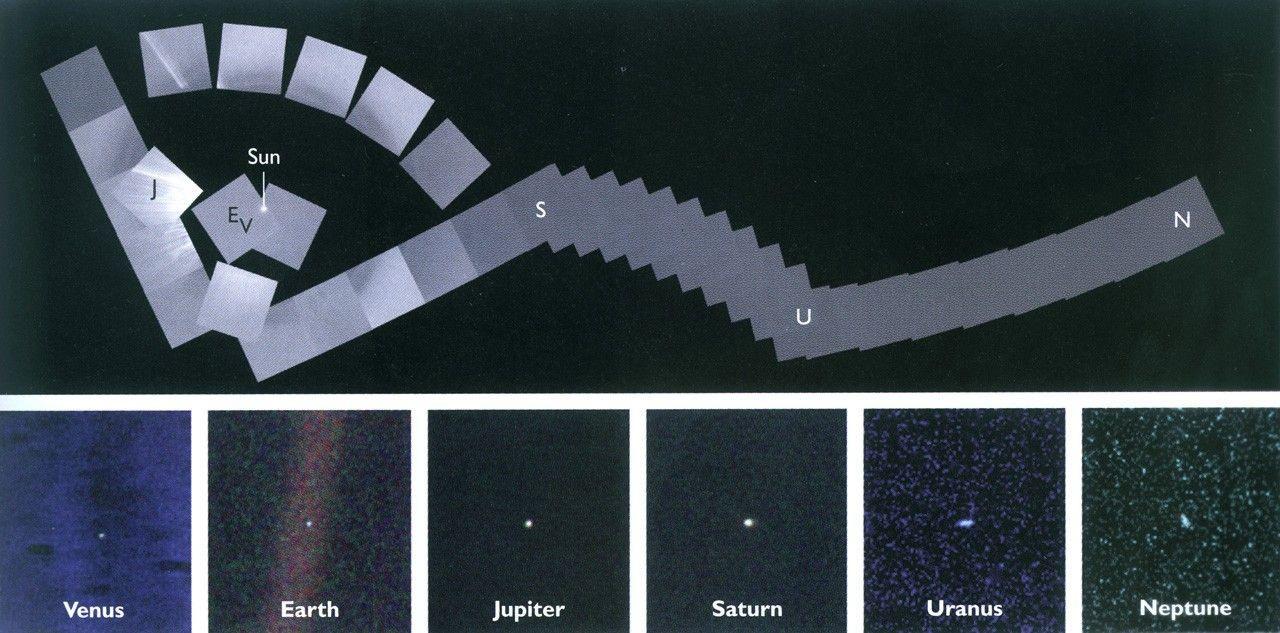zrb on Nostr: On February 14th, 1990, at the Jet Propulsion Laboratory (#JPL) in Pasadena, ...
On February 14th, 1990, at the Jet Propulsion Laboratory (#JPL) in Pasadena, California, the operators of #Voyager1 were preparing to shut down the probe's camera system for the final time. Since launching in 1977, the spacecraft had performed close flybys of Jupiter and Saturn and was using its kinetic energy from the gravitational slingshot to head toward the edge of our solar system, the so-called "termination shock" where the solar wind meets interstellar space. Out so far from everything, and with dwindling electrical output from the plutonium generator, it didn’t make much sense to keep the camera operating and consuming power with nothing left to see.
There WAS one final thing left to see, however; the spacecraft’s distant position allowed it a unique view of our entire solar system. Recognizing this, the mission planners decided that before they shut down the camera system for good, Voyager 1 would look back and take one last series of photos: a so-called "family portrait" of every planet together.
Here is the result:

Published at
2025-02-07 02:07:31Event JSON
{
"id": "f295cf1048cfca8fbaba4d88014cd10cb17b57c214cf29a40af62f532c9283dd",
"pubkey": "2f33cb24c29ae170e07320a628efa1e8271ed9256c2b19853ee21b501a346600",
"created_at": 1738894051,
"kind": 1,
"tags": [
[
"t",
"jpl"
],
[
"t",
"voyager1"
],
[
"imeta",
"url https://media.astrodon.social/media_attachments/files/113/960/126/830/137/994/original/9e240d45a4c2fafb.jpeg",
"m image/jpeg",
"dim 1280x633",
"blurhash UA9aU0?dt9RkIU%MxtRi9FWBj^j]xtRiWBkC"
],
[
"proxy",
"https://astrodon.social/users/zrb/statuses/113960160552629126",
"activitypub"
]
],
"content": "On February 14th, 1990, at the Jet Propulsion Laboratory (#JPL) in Pasadena, California, the operators of #Voyager1 were preparing to shut down the probe's camera system for the final time. Since launching in 1977, the spacecraft had performed close flybys of Jupiter and Saturn and was using its kinetic energy from the gravitational slingshot to head toward the edge of our solar system, the so-called \"termination shock\" where the solar wind meets interstellar space. Out so far from everything, and with dwindling electrical output from the plutonium generator, it didn’t make much sense to keep the camera operating and consuming power with nothing left to see.\n\nThere WAS one final thing left to see, however; the spacecraft’s distant position allowed it a unique view of our entire solar system. Recognizing this, the mission planners decided that before they shut down the camera system for good, Voyager 1 would look back and take one last series of photos: a so-called \"family portrait\" of every planet together.\n\nHere is the result:\n\nhttps://media.astrodon.social/media_attachments/files/113/960/126/830/137/994/original/9e240d45a4c2fafb.jpeg",
"sig": "8c26b49419950a28cb28b0b45e9093fe85289f1e6ebdf5e65cfa9fa76992812320b45c145a2966f308f74ff38a1f15cfa5ca5360abb21bec15fdaacb91ee20e1"
}

